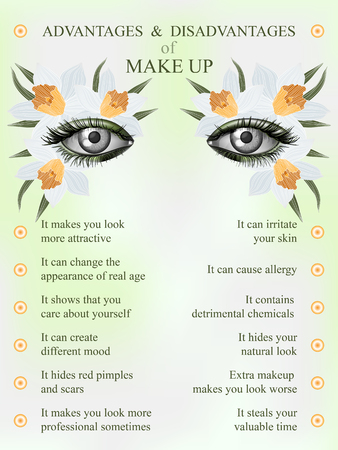Introduction to Chemical Peels and the Importance of Timing
Chemical peels are a popular aesthetic treatment that gently exfoliate the skin using specially formulated acids, revealing a smoother, brighter, and more youthful complexion. From reducing fine lines and pigmentation to improving acne scars and overall skin texture, chemical peels offer numerous benefits for those seeking revitalised skin. However, achieving the best possible results and ensuring your comfort throughout the process requires more than just choosing the right type of peel. In the UK, our distinctive seasonal changes—from crisp winters to occasionally sweltering summers—can greatly impact both the procedure itself and the healing period that follows. By aligning your chemical peel appointments with the UK’s seasonal calendar, you can optimise recovery, minimise side effects like sensitivity or hyperpigmentation, and fully enjoy your skin’s transformation all year round.
2. Understanding the British Seasons and Skin Impacts
The UK experiences a unique blend of seasonal climate changes that play a significant role in both skin health and the recovery process following chemical peel treatments. Recognising how these weather patterns interact with your skin can help you schedule your procedures for optimal results and comfort.
An Overview of UK Seasonal Climate
The British Isles are known for their variable weather, but generally, the climate is characterised by damp, chilly winters and relatively mild summers. Each season brings distinct environmental factors that influence how your skin behaves and heals after a chemical peel. Below is a summary of the typical climate across the year:
| Season | Typical Weather | Skin Impact | Considerations for Chemical Peels |
|---|---|---|---|
| Winter (Dec–Feb) | Damp, cold, reduced sunlight | Dryness, sensitivity, slower healing due to low humidity and central heating | Ideal for deeper peels; less sun exposure reduces pigmentation risks |
| Spring (Mar–May) | Mild temperatures, increasing daylight, occasional rain | Gradual improvement in hydration; potential for allergies or irritation | Good for lighter peels as skin recovers from winter dryness |
| Summer (Jun–Aug) | Mild to warm, higher humidity, longer days, more UV exposure | Increased oil production, risk of sun damage post-treatment | Caution advised: Sun protection is critical post-peel; consider milder treatments |
| Autumn (Sep–Nov) | Cooling temperatures, more rainfall, shorter days | Transitional period—skin may fluctuate between oily and dry | Suitable for medium-depth peels; prepares skin before harsher winter months |
Weather Fluctuations and Skin Recovery After Peels
The unpredictable nature of British weather—frequent rain showers, sudden temperature shifts, and overcast skies—can all affect your skin’s barrier function. Dampness can sometimes assist in keeping skin hydrated during recovery, but prolonged exposure to cold winds or central heating may exacerbate dryness and irritation. Conversely, increased sunlight during summer heightens the risk of pigmentation issues after a peel if adequate sun protection isn’t used.
Tailoring Your Chemical Peel Schedule to the UK Climate
Understanding these seasonal influences allows you to make informed decisions about when to book your chemical peel. For example, scheduling deeper peels during the winter may be preferable due to lower UV levels, while opting for lighter treatments in spring or autumn supports recovery without heightened sun exposure. Always consult with your skincare professional to personalise your treatment plan based on both the calendar and your individual skin needs.

3. Best Times of Year for Chemical Peel Appointments
When it comes to scheduling your chemical peel treatments in the UK, timing is everything. The changing seasons, fluctuating levels of sunlight, and the rhythm of the British calendar all play a pivotal role in determining when you’ll get the best results with minimal risk. For those considering light peels such as glycolic or lactic acid treatments, autumn and winter are generally regarded as ideal. During these months, reduced sun exposure lowers the risk of post-procedure pigmentation changes and allows your skin time to heal without additional UV stress.
Medium and deep peels require even more careful planning. Since these treatments involve longer recovery times and make your skin particularly sensitive, it’s wise to avoid scheduling them during spring and summer when daylight hours are at their longest. Instead, consider booking these more intensive peels between late October and early March, giving yourself a buffer before any planned holidays or social events.
The UK calendar also presents unique considerations. With school holidays, festive periods like Christmas, and popular travel times such as Easter and summer breaks, you may wish to avoid scheduling peels just before or during these busy intervals. Not only can increased outdoor activities raise the risk of sun exposure, but public events may also interfere with your aftercare routine.
For optimal results, always consult with your skincare professional about your personal calendar as well as the UK’s seasonal patterns. By carefully choosing the right time of year for your chemical peel appointment, you’re setting yourself up for a smoother recovery and healthier, more radiant skin.
4. Pre-Treatment Advice: Preparing for Your Peel
Seasonal changes across the UK mean that your skin’s needs—and your pre-peel preparation—should adapt accordingly. Whether you’re scheduling a chemical peel in chilly January or during a humid July, making season-specific adjustments to your skincare and lifestyle will help ensure optimal results and comfort.
Skincare Adjustments by Season
| Season | Skin Prep Recommendations | Common UK Weather Considerations |
|---|---|---|
| Winter | Increase hydration, use gentle cleansers, avoid exfoliants one week prior, apply rich moisturisers nightly | Cold, dry air can lead to dehydration and sensitivity—focus on barrier repair |
| Spring | Introduce antioxidants, continue hydrating products, reduce retinoids if outdoors more often | Pollen allergies can affect skin; balance between indoor heating and outdoor humidity shifts |
| Summer | Ramp up SPF use, avoid peels during heatwaves, lighten moisturiser if skin gets oilier | Increased UV exposure in longer daylight hours; sweat and oil production may rise |
| Autumn | Reintroduce gentle exfoliation, switch to nourishing serums, prepare for drier weather ahead | Cooling temperatures and wind can start drying out the skin after summer’s humidity |
Lifestyle Considerations Before Your Peel
- Avoid Sun Exposure: Especially crucial in spring and summer—UK sun may be mild but still potent enough to sensitise skin before treatment.
- Mind the Bank Holidays: Plan appointments away from busy periods or when you might be travelling, as post-peel downtime is best spent at home.
- Adjust Exercise Routines: Reduce vigorous workouts a couple of days before treatment to minimise irritation from sweat or friction.
- Stay Hydrated: Central heating in winter or air conditioning in summer can dehydrate your skin—drink plenty of water year-round.
- Avoid Harsh Products: Steer clear of retinoids, exfoliating acids, and waxing for at least one week prior, whatever the season.
- Mental Preparation: Schedule your peel when you have time to recover indoors, particularly during unpredictable UK weather spells.
Quick Reference: One Week Pre-Peel Checklist (UK Edition)
| Task | Why It Matters (UK Context) |
|---|---|
| Avoid active ingredients (retinol, AHA/BHA) | Reduces risk of excessive peeling or irritation under variable British weather conditions |
| Bump up moisturisation (especially in winter/autumn) | Counters effects of central heating and cold winds common in the UK climate |
| Sunscreen daily (even on cloudy days) | The UK’s UV index can be deceptive due to overcast skies—protection remains essential year-round |
| No facial hair removal treatments (waxing/threading/laser) | Avoids increased sensitivity and potential complications during the peel process |
| Check your social calendar for recovery days post-peel | Avoids overlap with important events or travel around typical busy seasons like school holidays or festivals |
By adapting your pre-treatment routine to the UK’s unique seasonal rhythms—from layering up your skincare in winter to staying extra sun-safe in summer—you set the stage for smoother recovery and more radiant results from your chemical peel.
5. Post-Treatment: Aftercare in Britain’s Seasons
After a chemical peel, your skin requires dedicated care and attention to achieve the best results—especially when considering the UK’s famously changeable climate. Tailoring your aftercare routine to Britain’s distinct seasons is crucial for keeping your skin protected, hydrated, and healthy all year round.
Spring: Gentle Protection from Unpredictable Weather
Spring in the UK brings fluctuating temperatures and frequent showers. After a peel, your skin will be more sensitive to environmental factors. Opt for a light, fragrance-free moisturiser to help with hydration and barrier repair. Always apply a broad-spectrum SPF 30 or higher—even on cloudy days—to shield fresh skin from intermittent UV rays. Carry an umbrella or wide-brimmed hat for extra protection against unexpected weather changes.
Summer: Sun Defence at Its Strongest
Though British summers may not always be scorching, UV exposure is still significant. After a chemical peel, avoid direct sunlight as much as possible for at least two weeks. Wear high-SPF sunscreen (reapplying every two hours if outdoors), sunglasses, and protective clothing. Stay hydrated by drinking plenty of water; air-conditioned indoor environments can also dry out your skin, so consider using a hydrating facial mist throughout the day.
Autumn: Managing Moisture Loss
The crisp autumn air in the UK can lead to dehydration. Switch to a richer moisturiser that supports skin barrier recovery post-peel. Gentle cleansing is key—avoid harsh exfoliants or active ingredients like retinol until your skin has fully healed. If you’re outdoors during windy days, use a scarf to protect your face from drying gusts and always continue with daily SPF application.
Winter: Combatting Cold and Central Heating
British winters combine chilly air with drying indoor heating, both of which can exacerbate post-peel dryness and sensitivity. Use emollient-rich creams to lock in moisture and prevent flakiness. Consider running a humidifier indoors to maintain optimal air moisture levels. Avoid hot baths or showers immediately after treatment, as extreme temperatures can irritate freshly treated skin.
General Year-Round Advice
No matter the season, refrain from picking at peeling skin or using abrasive scrubs post-procedure. Stick closely to your practitioner’s aftercare instructions, including recommended products and timelines for resuming your usual skincare regime. If you notice prolonged redness, swelling, or discomfort, consult your clinic promptly.
By adapting your post-treatment care according to the UK calendar and climate, you’ll support optimal healing while maintaining radiant, healthy skin throughout every season.
6. Booking Tips: Timing Around British Events and Holidays
When planning your chemical peel treatments, it’s important to consider the unique rhythm of the UK calendar. Cultural events, public holidays, and travel plans can significantly impact both your schedule and recovery process. For instance, many clients prefer to avoid major social gatherings—such as weddings, summer fêtes, or Christmas parties—during their immediate post-peel downtime. Peeling and redness are common side effects that may last several days to a week, so it is wise to book your treatment at least two weeks before any key event.
Take into account popular holiday periods like Easter, bank holidays, and half-term breaks when clinics may have limited availability or altered hours. Booking well in advance during these peak times ensures you secure your preferred slot and avoid disappointment. If you tend to travel during school holidays or enjoy extended summer breaks, plan your chemical peel sessions for quieter months such as early spring or late autumn. This not only guarantees a more relaxed recovery period at home but also reduces the risk of excessive sun exposure, which can affect post-treatment skin health.
Additionally, be mindful of unpredictable British weather. Overcast days can be beneficial for post-peel care, as direct sunlight should be avoided during recovery. If you participate in outdoor festivals or sporting events—like Wimbledon or Glastonbury—schedule your treatment with enough time to allow full healing before being exposed to large crowds or outdoor environments.
In summary, aligning your chemical peel appointments with the ebb and flow of British life ensures minimal disruption to your routine while promoting optimal results and recovery.
7. Summary & Next Steps
In summary, timing your chemical peel treatments in accordance with the UK’s unique seasonal variations is essential for achieving optimal results while minimising potential risks. From navigating the low UV exposure of winter to preparing for increased social events during spring and summer, each season presents its own set of considerations that should shape your skincare planning. It’s crucial to factor in the British climate, local festivities, and holiday periods when booking your appointments. To ensure the highest safety standards and personalised care, always consult with a qualified UK-based skin professional who understands both your individual needs and the nuances of British weather. By taking a proactive approach—planning ahead and seeking expert advice—you can enjoy safe, effective, and radiant results from your chemical peel treatments throughout the year.


